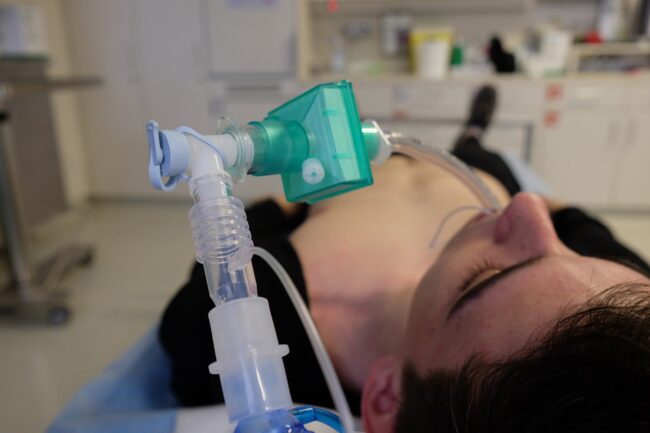At this moment, there are thousands of intelligent, well-meaning engineers trying to help the design of open source ventilators to address a possibly imminent life-threatening shortage caused by the COVID-19 pandemic.
There are a lot of low cost open source ventilator project now running. We will give here a short overview of ideas around the world.
It is possible to split professionell ventilators:
Concerned with the Pandemic, we, a group of engineers and makers, decided to join forces from our homes and workshops to try and contribute. With the purpose of freeing medical personnel in extreme situations, we have designed an open hardware device, which provides instructions for the automation of an existing AMBU type breathing system. Something that anyone can build using very common parts and without special tools. All information is available at https://oxygen.protofy.xyz/. It’s an open project, the more we contribute, the better! Note: OxyGEN is not a certified medical device.
British home appliances firm Gtech, which specialises in making vacuum cleaners, has made a prototype of a medical ventilator which founder Nick Grey says can be scaled to mass production within weeks. Made largely from off-the-shelf parts, the ventilator runs on compressed air and can be assembled with a simple production line.
Teknic Inc
Teknic Inc
Dr. Stephen Richardson, Doctor of Anesthesiology at the University of Minnesota, and his team showing the new ventilator in action.
RT Clinic: Setting up the VAR – Vortran Automatic Resuscitator – Go2Vent
Macgyvilator Mk 1 (3-19-2020) – “ventilator” for disasters and/or low resource environments
Version 2
CNCprislusenstvo
The video from a ventilator is an example of what we have achieved in three days, including a basic study of the issue. There is still a long way to go and a reliable pump is the first step. We need to involve automation experts and especially medical professionals in the process. We want to contribute to the best preparedness for the worst and of course we hope for the best
Gtech COVID-19 Ventilator
Borzoo Farhang
A new innovation from the University of Oxford may soon be able to boost that number, thanks to an innovative design for a cheaper ‘off-the-shelf’ version.
Medizingeräteherstellung DIY-Beatmungsgerät
Virgin Orbit has developed a new mass-producible bridge ventilator to help in the fight against the coronavirus (COVID-19) pandemic. The Virgin Orbit team has been consulting with the Bridge Ventilator Consortium (BVC), led by the University of California Irvine (UCI) and the University of Texas at Austin (UT Austin), a group formed to spawn and nurture efforts to build producible, simple ventilators to aid in the current COVID-19 crisis. Pending clearance by the Food and Drug Administration (FDA), Virgin Orbit aims to commence production at its Long Beach manufacturing facility in early April, sprinting to deliver units into the hands of first responders and healthcare professionals as soon as possible.
DIY portable ventilator Kastantinov
Easy to assemble do-it-yourself portable ventilator based on driver drill. With this setup – you can control the speed manually. Also, you have to change the battery manually.
Venderbuilt University
As COVID-19 continues to push unprecedented challenges on medical communities, one of the most pressing threats for hospital staff across the country is a dwindling supply of ventilators. Now, an interdisciplinary team of Vanderbilt University and Vanderbilt University Medical Center faculty is taking on the challenge by way of a fabricated, open-source ventilator design. Led on the Vanderbilt side by engineers Kevin Galloway, research assistant professor of mechanical engineering and director of making at the Wond’ry, and Robert Webster, Richard A. Schroeder Professor of Mechanical Engineering, the team is currently on “version two” of the ventilator prototype and hopes to soon move into the final prototype phase before manufacturing. “Maker communities around the globe are stepping up to address the pressing medical challenges presented by COVID-19, such as the need for personal protection equipment like face masks,” said Galloway. “In conversation with Bob Webster and colleagues at the Medical Center, we discussed how we can leverage our expertise to tackle this one issue which resonated most strongly for us.” After an initial conversation with VUMC physician Duke Herrell discussing the threat posed by a lack of respiratory support equipment, Webster reached out to Galloway about a design he had already been toying with in his home garage as well as a process to figure out the signature difficulty in making a ventilator: replicating the precise force of the hand involved in squeezing a manual bag. In the first prototype, Galloway wrapped nylon webbing around an Ambu bag and attached it to the crank arm of a windshield wiper motor to apply the repetitive squeezing force. While the design worked, they still needed a cleaner design where the amount of squeeze (known as tidal volume) could be controlled more precisely.
Equilibar – Precision Pressure Control
With the COVID-19 pandemic causing a shortage of ventilators across the globe, engineers at Equilibar are using our pressure and flow control expertise to design blocks for ventilator systems using alternative supply chains. Equilibar engineers and the rest of our technical team are working with biomedical experts on multiple related products. At the same time we’d like to offer the open source ideas presented in these videos for anyone with appropriate knowledge and expertise to consider. This series of videos describes a low-cost ventilator concept using commonly available components. The following video demonstrations are meant to serve as a source of ideas. The information contained is open source and free for anyone to use anywhere in the world. Neither the author, David Reed, nor Equilibar make any claim to it, nor do we make any claim about its suitability to actually work as a life sustaining device. Ideas are intended to serve as building blocks for ventilator systems designed by experienced biomedical professionals. Proceed at your own risk.
Control Speed of Windshield Wiper Motor with an Arduino – DIY Ventilator made from Car Parts
This video details how a windshield wiper motor works and how to control the speed of it by hacking the intermittent function and manually controlling it with basic electronic components found even in an arduino starter kit. Part of a much bigger project by Team Crushing It to design, develop, and manufacture a DIY Ventilator made from car parts.
CockrellSchool
Researchers at The University of Texas at Austin are building a new type of ventilator made of cheap, widely available materials to help fill the demand created by the spread of COVID-19 for these critical devices that help patients breathe. Ventilators become necessary when patients can’t breathe on their own, physically pumping oxygen into their lungs. They are in short supply. That’s why the researchers are building a “bridge ventilator” that can be replicated and mass-produced by others. The device is called the Austin Bridge Breathing Unit, and it uses a manual resuscitator, a common tool called an AMBU (artificial medical breathing unit) bag. A windshield wiper motor pulled from a Toyota Camry powers a small caster wheel that pushes down on the bag to control oxygen flow. Four potentiometers control the respiration rate, the volume of oxygen given to patients, the time to inhale and the maximum pressure.
Ventilator made out of industrial components example Festo AG Esslingen Germany
| Parts description | Part number* |
|---|---|
| Contactless magnetic proximity sensor with pneumatic output | SMPO‐1‐H‐B |
| Pneumatic limit switch for end position sensing | S‐3‐PK‐3‐B |
| Pneumatic shuttle valve, actuated one end, spring return | VL‐5‐1/8 |
| Variable pressure regulator valve | LRMA‐QS‐4 |
| One‐way flow control valve (×2) | GR‐QS‐4 |
| Pneumatic round cylinder | DSEU‐25‐200‐P‐A‐MQ |
| Shut‐off valve (ball valve) | QH‐QS‐4 |
| Non‐return valve | H‐QS‐4 |
| Ancillaries | 2, 3 and 4‐way Quick‐star 4‐mm push‐in fittings. 4‐mm hose. 1/8 male to 4‐mm female connectors x 6, to fit 5/2‐way pneumatic valve. Locally sourced hardware to construct housing. |
| Self‐inflating resuscitation bag with supplementary oxygen port, reservoir bag and pressure limiting valve. |
Tesla Ventilator
Open Source Pandemic Ventilator with Raspberry Pi
Sanadesk is not responsible for ideas on this blog post. All ideas around the world from different persons or companies. All ideas are no medical devices!
Sanadesk AG is not a medical device manufacturer and do not sell any medical devices! Sanadesk AG do not support or consult in the area of medical devices. Sanadesk AG do not develope software or support software for medical devices.

